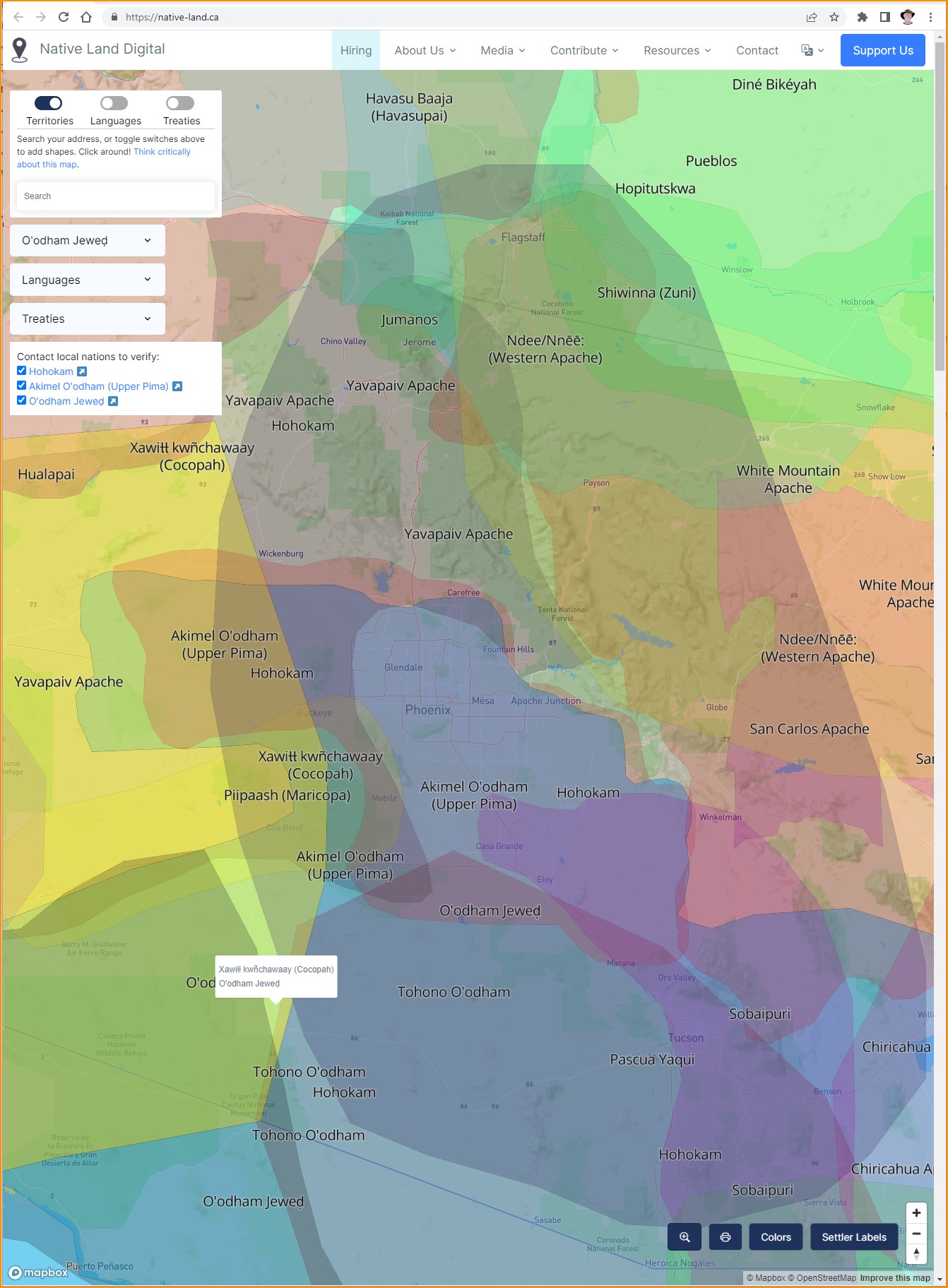Priorities / Equity, Inclusion and Environmental Justice / Acknowledging Native Lands...
Our Grand Canyon Chapter believes that Acknowledging Native Lands is vital, as a priority of our chapter's commitment -- to center equity, justice, and inclusion -- and to uphold just relationships...
(Dynamic interactive maps of Native Lands are available, online -- see down at bottom, of this webpage)
Background Info...
Here are brief excerpts from: Territory Acknowledgement -- a superb resource from Native Lands Digital, to help learn so much more...
- It is very likely that if you do not do any further research...you will err in your acknowledgements.
- We recommend contacting the nations...directly, to learn more about how they want to be acknowledged...and any other nations or peoples in the area
- Territory acknowledgement is a way that people insert an awareness of Indigenous presence and land rights in everyday life.
- This is often done at the beginning of ceremonies, lectures, or any public event.
- It can be a subtle way to recognize the history of colonialism and a need for change in settler colonial societies.
- However, these acknowledgements can easily be a token gesture rather than a meaningful practice:
- All settlers, including recent arrivants, have a responsibility to consider what it means to acknowledge the history and legacy of colonialism.
- Territory acknowledgements are one small part of disrupting and dismantling colonial structures.
- You may also want to get in touch with local Indigenous nations or organizations to build relationships and support their work.
- Use our tools to find some contacts...
~ from Territory Acknowledgement
Here are some vital excerpts from:
Honor Native Land: A Guide and Call to Acknowledgement (13-page PDF)
-- a resource from the non-governmental US Dept of Arts and Culture
(per their disclaimer: "USDAC is a network of 35,000+ artists, organizers, educators, community leaders and allies. We hold the name of a government agency that doesn’t exist; but...we are building the world we wish did exist.")
- Acknowledgment by itself is a small gesture.
- It becomes meaningful when coupled with authentic relationships and informed action.
- But this beginning can be:
- an opening to greater public consciousness of Native sovereignty and cultural rights,
- a step toward equitable relationship and reconciliation
- Join us in adopting, calling for, and spreading this practice.
Native Lands of nearby areas...
(See below, too -- for a static Map Image of Native Lands Nearby -- and an interactive global map)
- Here is a start of a list for each Native Lands Nation, nearby:
- Hohokam
- Sobaipuri
- Tohono O'odham -- [Official Website]
- O’odham Jeweḍ
- [more to be added]
- Also, take time to learn from this superb guide on how to use their map:
- The Land You Live On: An Education Guide by Native Land (24 pages)
- The Land You Live On: An Education Guide by Native Land (24 pages)
Online Interactive "Native Lands Map"...
Look close at this superb interactive global map, of Native Lands -- including:
- For details on using this online map, see: The Land You Live On: An Education Guide by Native Land (24 pages)
- Colorful shapes to show the Traditional Lands of specific Nations
- Overlap areas, too
- Zoom In / Zoom Out -- via double-click (to zoom in) -- and shift double-click (to zoom out)
- Click and Drag -- to re-position the map -- vertical or horizontal
- Dynamic Pointer Info -- a list of Nations is shown, for wherever you position your mouse pointer.
- Dynamic Links of Nations -- for wherever you click on the Map -- a list of links updates, in the upper-left corner of the Map -- each link will open a dedicated webpage, with vital info for each Nation (located wherever you clicked)
- Settler Labels -- ie, to display on the map -- all those names of places (states, cities, etc) created by Settler Colonial Societies"
- etc.
